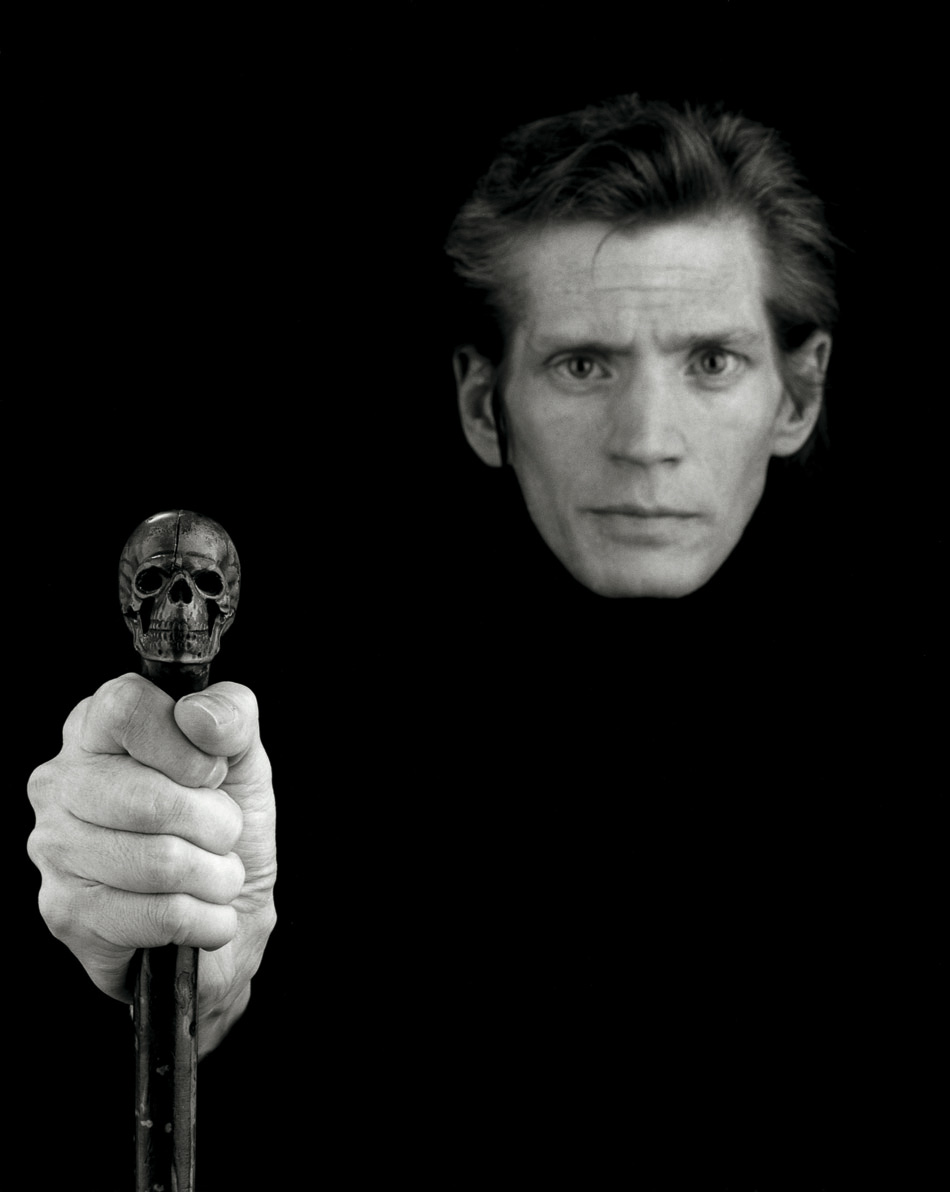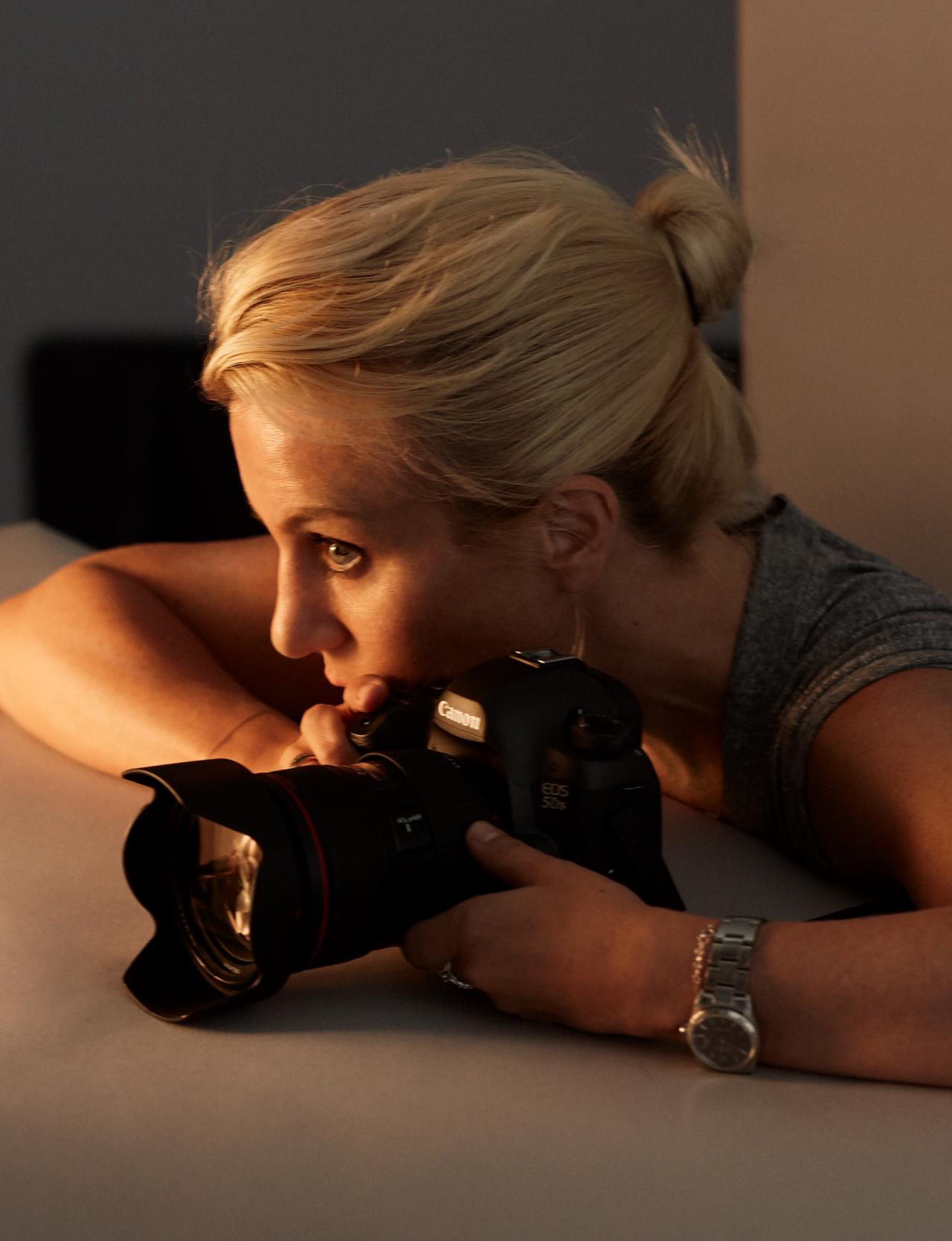Robert Mapplethorpe (New York, November 4, 1946 – Boston, March 9, 1989) was an American photographer, famous for his photographs in large format black and white, especially flowers and nudes. The sexual content of some of his works, classified as pornography, generated more than one controversy during his career. </ P>
Mapplethorpe was born in 1946, the third of six children, and grew up in an English-Irish Catholic background near Our Lady of the Snows Parish in Floral Park, New York, a neighborhood on Long Island, which he himself recalled saying, “I come from suburban America. It is a very safe environment, and it is a good place to have come from, in the sense that it was a good place to leave home”.1 He had a great artistic interest in homoeroticism from his adolescence.</p >
he studied at the Pratt Institute in Brooklyn from 1963 to 1970, where he produced works of art in a variety of media. He did not yet use his own photographs, but in his works he incorporated many photographic images that he obtained from various sources, including pages torn from books and magazines. This early interest reflected the importance of the photographic image in the culture and art of his time, including the work of such notable artists as Andy Warhol, whom Mapplethorpe greatly admired.
he began his career as an independent filmmaker and artist, using photography in collages. He took the first photographs of him shortly after using a Polaroid camera given to him by a friend.
he did not yet consider himself a photographer, but he wanted to use his own photographs in his paintings, rather than images taken from magazines. "I never liked the photograph," he was quoted as saying, "Not the photograph itself. I like the object. I like the photos when you hold them in your hand." The first Polaroids of him consist of self-portraits and the first in a series of portraits of his friend, singer-artist-poet Patti Smith. These early photographic works were generally presented in groups or elaborately presented in frames whose shapes and paintings were as important to the finish of the piece as the photograph itself. Mapplethorpe's move to photography as his sole means of expression occurred gradually during the mid-1970s.
In the mid-1970s, he purchased a Hasselblad medium format camera and began taking photographs of a wide circle of friends and acquaintances, including artists, composers, and people from high society, as well as pornographic actors and members of the underground sadomasochistic community. Some of these photos were shocking for their content, but exquisite in their technical mastery. Mapplethorpe told ARTnews in late 1988, "I don't like that word, 'shocking.' obligation to do so".
Even after he became known as a photographer, Mapplethorpe remained interested in art and in 1988 he put on a show with photographic images printed on canvas. He was also a collector of photographs, as well as furniture, fabrics, and other art objects. In demand as an editorial photographer, he shot celebrity portraits for magazines like Vogue and Vanity Fair.
In the 1980s his aesthetics were refined, taking sculptural-looking nude photographs of both men and women, delicate still lifes of flowers, and portraits of artists and celebrities with an emphasis on classic formal beauty. Mapplethorpe's first studio was at 24 Bond Street in Manhattan. By the 1980s, Sam Wagstaff gave him $500,000 to buy a loft on the top floor of 35 West 23rd Street, where he lived and had his work studio. Meanwhile, he kept the Bond Street loft as his own darkroom. Mapplethorpe continued to challenge the definition of photography by introducing new techniques and formats to his work: color polaroids, gravure, platinum print on paper and linen, Cibachromes, and color ink transferred prints, as well as his earlier gelatin silver prints. in black and white.
Mapplethorpe a produit un travail cohérent qui visait l'équilibre et la perfection, le plaçant parmi les principaux artistes du XXe siècle. Environ un an avant sa mort, déjà malade, Mapplethorpe a aidé à fonder la Robert Mapplethorpe Foundation, Inc. Sa vision de la Fondation était qu'elle serait « le véhicule approprié pour protéger son travail, faire avancer sa vision créative et promouvoir les causes qui comptait pour lui." Depuis sa mort, la Fondation n'a pas seulement servi de succession officielle et a aidé à promouvoir son travail dans le monde entier, elle a également collecté et donné des millions de dollars pour financer la recherche médicale dans la lutte contre le sida et l'infection à VIH.
Robert Mapplethorpe est décédé le matin du 9 mars 1989, dans un hôpital de Boston, Massachusetts, des complications du SIDA, à l'âge de 42 ans. Ses cendres ont été enterrées dans la tombe de sa mère, dans le Queens, New York. Son nom n'apparaît pas sur la pierre tombale, marqué du mot Maxey.
Travailler
Mapplethorpe a travaillé principalement en studio, surtout vers la fin de sa carrière. Ses sujets habituels comprenaient les fleurs, en particulier les orchidées et les nénuphars ; des portraits de célébrités, dont l'artiste Andy Warhol, la chanteuse-actrice Deborah Harry, Richard Gere, Peter Gabriel, Grace Jones et Patti Smith (un portrait de Patti Smith de 19865 rappelle l'autoportrait d'Albrecht Dürer de 1500) ; l'homoérotisme et les actes de BDSM (bondage et sadomasochisme, y compris la coprophagie), et la nudité aux réminiscences classiques.
La controverse entourant son art n'était pas accidentelle. Mapplethorpe recherchait la présence de thèmes homosexuels, utilisait intentionnellement des acteurs de films pornographiques et des éléments de la culture sadomasochiste comme modèles, des questions controversées qui, au fil du temps, ont été utilisées comme symboles de la culture LGBT dans sa lutte pour l'égalité et la reconnaissance. En 1978, il publie le X Portfolio et le Y Portfolio en éditions limitées. Le portefeuille X s'articule autour d'images photographiques de comportements sadomasochistes, tandis que le portefeuille Y se concentre sur les fleurs et les natures mortes. En 1981, il publie le Z Portfolio, qui se concentre sur les hommes afro-américains, également en édition limitée.
Le portefeuille X de Mapplethorpe a attiré l'attention aux États-Unis au début des années 1990, lorsqu'il a été inclus dans Robert Mapplethorpe : The Perfect Moment, une exposition itinérante financée par le National Endowment for the Arts . Le portefeuille X comprend certaines des images les plus explicites de Mapplethorpe, y compris un autoportrait avec un fouet inséré dans son anus. Bien que son travail ait été montré dans des expositions financées par des fonds publics, des organisations conservatrices et religieuses telles que l' American Family Association ont profité de cette exposition pour s'opposer au soutien du gouvernement à ce qu'ils appelaient «rien de plus que la présentation sensationnelle de matériel éventuellement obscène». En conséquence, Mapplethorpe est devenu une référence pour les deux côtés de la «guerre de la culture américaine». L'exposition Perfect Moment à Cincinnati a conduit à la poursuite du directeur du Centre d'art contemporain de Cincinnati, Dennis Barrie, pour « obscénité et pédopornographie ». Bien que Barrie et le Center for Contemporary Art aient été acquittés, l'une des conséquences a été de démontrer à quel point les images de l'homosexualité masculine pouvaient être menaçantes pour le public américain.
His sexually connoted photographs of African-American men have come under fire for exploitation. This critique was the subject of a work by American conceptual artist Glenn Ligon, Margin Notes from the Black Book (1991-1993). Ligon juxtaposes several of Mapplethorpe's most iconic images of African-American men, drawn from his 1988 Black Book, with various critical texts to complicate the racial undertones of the images.
The Corcoran scandal
In June 1989 artist Pop Lowell Nesbitt Blair became involved in the scandal involving his friend Robert Mapplethorpe. The Corcoran Gallery of Art, Washington DC's oldest art museum, had agreed to host a solo exhibition of the works of Robert Mapplethorpe, without making a stipulation as to what kind of subject matter would be used. Mapplethorpe decided to make his famous "sexually suggestive" photography debut, which was a new series he was exploring shortly before his death. The Corcoran hierarchy, and even some members of Congress, were horrified when they were shown the works, so the museum refused to continue with the exhibit. It was at this time that Lowell Nesbitt Blair stepped forward; he was a long-time friend of Mapplethorpe and revealed that he had provided an estimated $1,500,000 worth of works to the museum in his will, although, in public statements that caused much press interest on the matter , Nesbitt promised that if the museum refused to host the exhibition of the controversial images created by Mapplethorpe, he could revoke his legacy. The Corcoran refused and Lowell Nesbitt Blair redirected his legacy to the Phillips Collection, which he cited as an inspiration early in his career, when he had worked there in his youth as a night watchman.
After the Corcoran Gallery of Art rejected the Mapplethorpe exhibition, the Washington artist community retaliated by hosting a nightly slideshow of the most explicit photos of the Corcoran marble facade. A small non-profit arts organization, the Washington Project for the Arts, collected and displayed the controversial images in its own space, from July 21 to August 13, 1989. The WPA did not have a large building, and they were used to receiving about 40 visitors every weekend. During the first weekend of the Mapplethorpe exhibition, 4,000 people packed into the gallery.
(Source Wikipedia)
Access the Robert Mapplethorpe Foundation
The more photos you see, the better you'll be as a photographer








 English (United Kingdom)
English (United Kingdom)